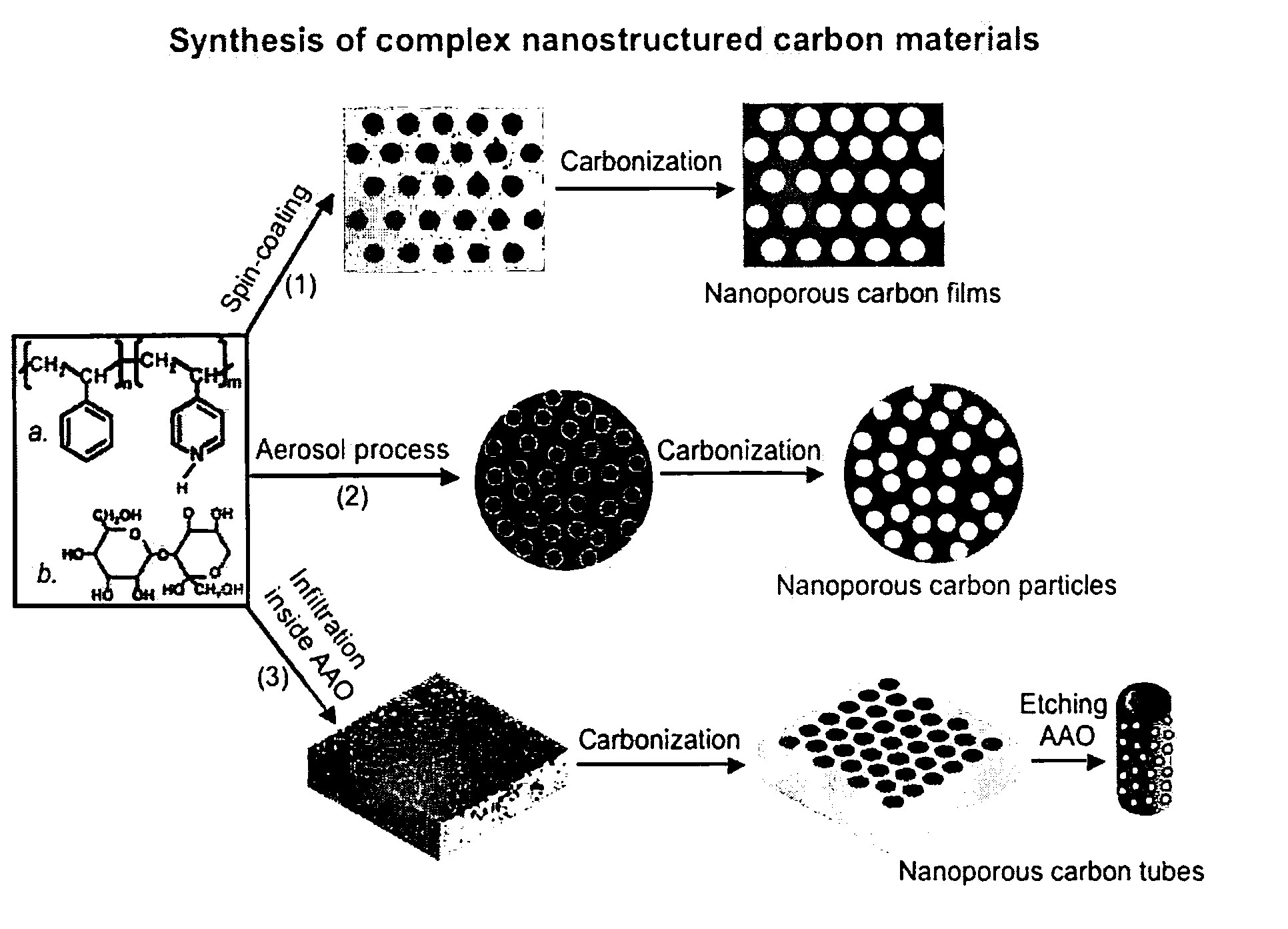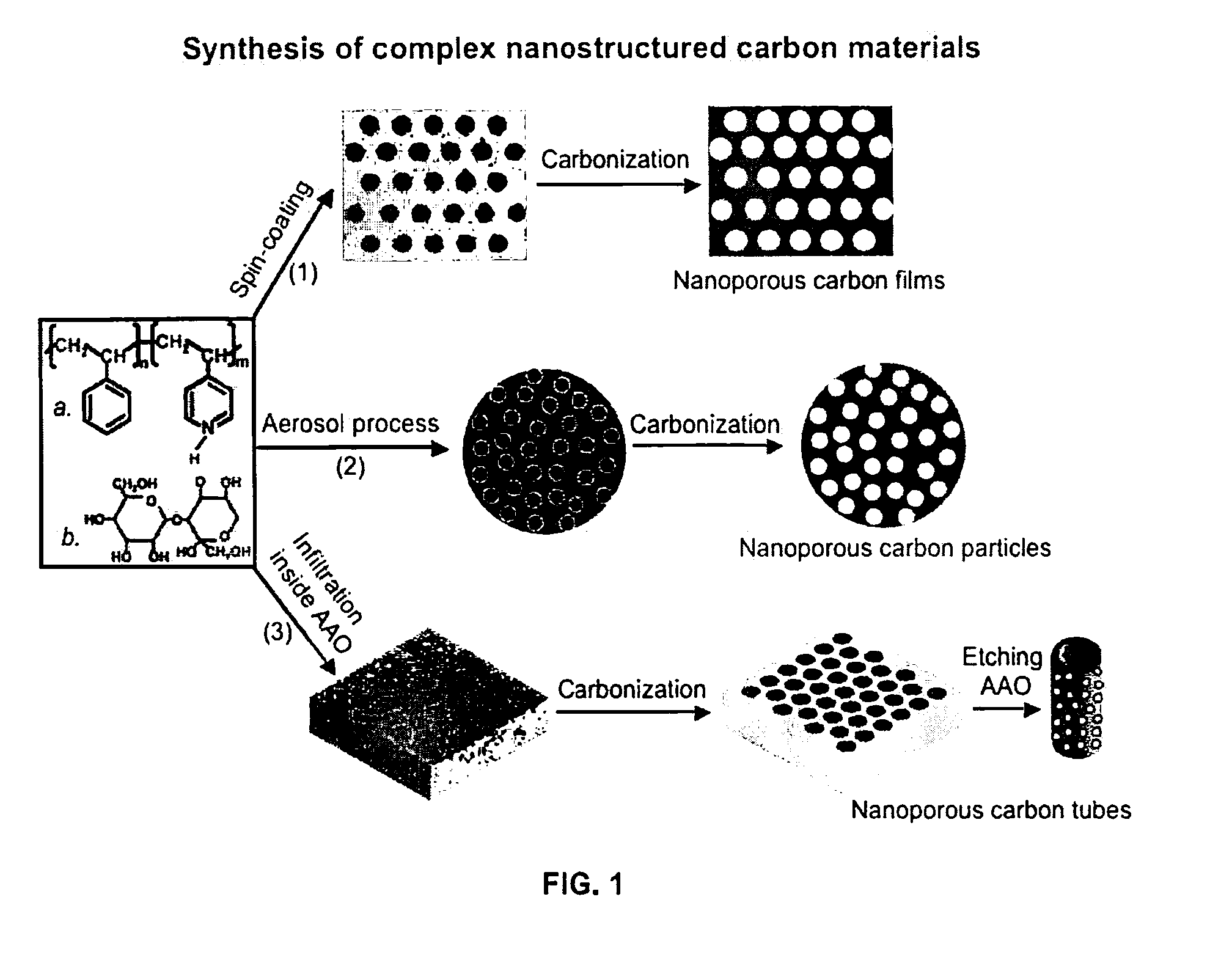Method for Synthesizing Carbon Nanotubes
a carbon nanotube and nanoporous technology, applied in the field of carbon nanoporous materials synthesizing methods, can solve the problems of less controlled pore structure of porous films, limited access and porosity of thin films, and limited mesopore accessibility of thin films
- Summary
- Abstract
- Description
- Claims
- Application Information
AI Technical Summary
Problems solved by technology
Method used
Image
Examples
example
Synthesis of Nanoporous Carbon Films
[0021]0.1 g of PS-P4VP (MnPS=12000 g·mol−1, MnPS=11800 g·mol−1 with molecular size distribution of 1.04, where MnPS is the molecular weight for the polystyrene (PS) block or chain) was added into 2 g DMF followed by addition 3-10 wt % of carbohydrate compounds, including turanose, raffinose, pentose, glucose, and sucrose. The solution was sonicated for 30-60 minutes to form a homogeneous solution. The samples were then cast or spin-coated onto substrates (silicon wafer, glass slides, and gold electrodes) at 1000 rpm for 2 min. The films were allowed to dry in the fume hood and then were placed in a sealed chamber in the presence of solvent vapor, such as DMF and benzene, DMF / THF, and DMF / DMSO, for 24 hrs. The samples were removed and carbonized under an inert environment at 460° C. or higher for 1 hr using a heating rate of 1° C. / min. To enhance hydrogen bonding, the coating solution was heated to 180° C. for 3 hours in an autoclave. After natural...
PUM
| Property | Measurement | Unit |
|---|---|---|
| temperature | aaaaa | aaaaa |
| temperature | aaaaa | aaaaa |
| temperatures | aaaaa | aaaaa |
Abstract
Description
Claims
Application Information
 Login to View More
Login to View More - R&D
- Intellectual Property
- Life Sciences
- Materials
- Tech Scout
- Unparalleled Data Quality
- Higher Quality Content
- 60% Fewer Hallucinations
Browse by: Latest US Patents, China's latest patents, Technical Efficacy Thesaurus, Application Domain, Technology Topic, Popular Technical Reports.
© 2025 PatSnap. All rights reserved.Legal|Privacy policy|Modern Slavery Act Transparency Statement|Sitemap|About US| Contact US: help@patsnap.com



